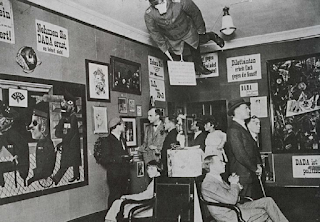Art and Anarchism
During my research about art and resistance, I realized how broad of a concept this was. After a brief research on political art, protest art, anti-art, anti-establishment art I have decided to focus on the relationship between Anarchism and art to narrow my subject.
The ties between these two concepts go back to the very beginning of the concept of Anarchism coming into being in politics, through the writings of Proudhon and Emile Zola and through the paintings of Gustave Courbet. I was also very surprised to learn about Félix Fénéon, a former anarchist who supported the young Avant-garde artists from Seurat to Matisse and believed in art’s potential to promote a more egalitarian world.
During my research I came across Kropotkin and Read who argued that in an anarchist society the role of the artist disappears and all activity becomes artistic since creativity is inherent to humanity and capitalism is what strips us of our creative aspects. This reminded me that many indigenous cultures don’t have a word in their language neither for “art” or “artist”. A Gitxsan artist, Doreen Jensen says that it is not because they are devoid of art but on the contrary art is so powerfully integrated with all aspects of their lives.
For the rest of the semester I will be focusing on both the political and aesthetic avant gardes and how they are seeking a cultural revolution through the disintegration of capitalist cultural institutions, integration of art and life and the dialectic between aestheticization and politicization. I will be looking deeper into the anti-art manifestos of Futurism, Dada and Surrealism, the Neo-Impressionists who were active in anarchist circles, Post-war modernism and if I can - contemporary examples.


Comments
Post a Comment